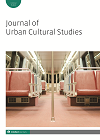
Full text loading...

In the wake of George Floyd’s murder during the summer of 2020, protestors painted large ‘BLACK LIVES MATTER’ murals on streets of the United States, forcing politicians to confront these words tattooing their cities. Each creation and reception of a Black Lives Matter (BLM) mural is entwined within the machinations of city bureaucracies whose foundations are built upon racial capitalism and is enforced by militarized police. To analyse the removal of Black Lives Matter murals is to contextualize them within this history of racialized police violence and erasure, but to do so within an environment of mundane policy-hearings. The removal of Tulsa, Oklahoma’s BLM mural by its city government will be a case study of how bureaucracy can implement ‘race neutral’ policy language that ‘leaves no choice’ but erasure. But while some conservative politicians erased BLM murals to neutralize the radical abolitionist and police reform messages, other politicians similarly embraced the creation of BLM murals as a buffer against, instead of a bridge to, making substantial structural change. Washington, DC’s famous BLM mural will be my exemplar of this type of deceptive radical performative politics. This article explores how protest movements and bureaucracies interact, focusing on how the radical demands of the BLM movement can be subsumed by ‘colour blind’ city responses and/or performative politics while pointing to larger combative histories of how race is policed within the United States.

Article metrics loading...

Full text loading...
References


Data & Media loading...

Publication Date:
https://doi.org/10.1386/jucs_00050_1 Published content will be available immediately after check-out or when it is released in case of a pre-order. Please make sure to be logged in to see all available purchase options.